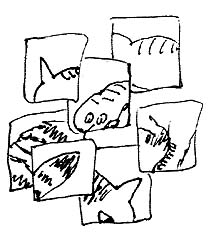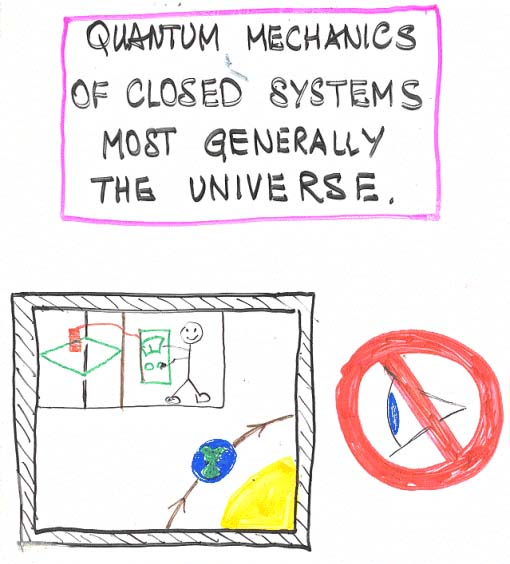
|
Lorna Mills and Sally McKay
Digital Media Tree this blog's archive OVVLvverk Lorna Mills: Artworks / Persona Volare / contact Sally McKay: GIFS / cv and contact |
View current page
...more recent posts

I am not an archivist. I am the sort of girl that, if you lend me a book, chances are you won't get it back because I will drop it in the bathtub while I'm reading it. That's why I have deep respect and admiration for people like Brock Silversides who actually collect, preserve, and catalogue cultural artifacts. Silversides is Head of the "Media Commons" at the University of Toronto Library, who have acquired the archives of Toronto's lefty weekly NOW Magazine. According to Silversides' essay in the catalogue, the NOW collection consists of "writing/editorial and research files, taped interviews and printed transcriptions, advertising and promotional material, artwork and graphics, office and administrative files, financial records, circulation records, legal files, awards, [and] memorabilia..." Tonight was the opening of a show of about 150 photographs from the 80s, culled from the collection (34,000 photos in all) by Silversides. My two favourites are Bob and Doug Mackenzie (aka Rick Moranis and Dave Thomas) of SCTV, shot by Patrick Harbron, and weirdo punk/alt. bandaged-up zombie musician Nash the Slash as Uncle Sam playing a violin, shot by Andre Pierre. The series of protest shots is also compelling, as are all the photos of youngster local politicians with bad hair and silly 80s fashion. The free, low-production-values catalogue, pictured above and below, is a perfect take-home souvenir.

I was surprised to find myself quite moved by the event. NOW founders Michael Hollett and Alice Klein each spoke with real passion about the bubbling energy of Toronto and it's people. This city is so gawky, it's like a perennial teenager churning with potential energy, a balloon that's always inflating but never bursts. This NOW archive, which includes a full bound set of every issue, is a real core sample of activism and art from the little city that tried and tried and tried. We want it all in Toronto, and we sometimes think we can get it. The listings, letters, lefty commentary and cultural repository that is NOW are both thoroughly taken for granted and thoroughly indispensable. As I rode home from the event along Harbord Street, I was passed by a woman that I can only describe as a "downtown cyclist." She was hip and cute and familiar, with heavy-rimmed glasses, a trim leather jacket, and, of course, a fresh copy of this week's NOW tossed into the milk-crate-basket strapped to her rack.
The phrase, "familiarity breeds contempt," may encapsulate Toronto's cultural situation in a nutshell. We do get on each others' nerves in this town. But we are also ambitious and passionate and looking at these photographs from NOW Magazine I see that familiarity is also fertile. In some weird way, everything that happened on the pages of NOW, from before I even moved here, belongs to me. If you live in Toronto, go see this show, it's part of our heritage and it's sitting in the palms of our hands. (Also, the rare book library is totally cool! Look up...)
Now and the 80s is on at the Thomas Fisher Rare Book Library, University of Toronto, 120 St George Street, til December 21st, 2004.
There is a nice piece of journalism-from-the-future here about the bad-apple hipsters who wrecked it for everybody else at the big art show in re-opened Terminal Five at JFK Airport in New York. Chat on the topic available at Schwarz. It's ridiculous. Did somebody say, "end of days?"
On Sunday I attended a panel at the Toronto Alternative Art Fair International that addressed the question "Is there an avant garde?" Both Watkins and Monk chose to address the topic as a history lesson, and as such their presentations were quite enjoyable. Watkins told tales of Greenburg in Australia, Marxists, Punk and the "heady days of early postmodernism." Monk, maybe because he was burnt out with manning the AGYU exhibit all weekend, was uncharacteristically lucid and direct (noteworthy!) saying, "Nobody, I hope, believes we can reconstitute the avant garde in Greenburgian terms." Gopnik gave a feisty off-the-cuff rant that rejected teleology while claiming that a "robust notion of the avant garde exists" in the minds of "the people" whether we accept the term itself as relevant or not. Barber talked about generational turnover as represented in artist-run centres such as Diverse Works in Houston where she is Visual Arts Director, and was inspiring in her definition of avant garde artists as "untested, taking risks, challenging convention and putting themselves out there to do things that don't have an assured result."
The most notable aspect of the event, in my opinion, was Monk's assertion that in the unlikely event that there were to be a reconstitution of the avant garde we ("we" meaning he, and the rest of us who are entrenched in our own art paradigms) quite likely could not recognise it. It may develop "in other places, by other means, by people who are not called artists." During the question and answer period both Gopnik and Watkins made similar assertions, agreeing that our cultural source for "creativity" might move to some other domain besides art. I found these statements startling, as I did not really expect a group of pundits with careers embedded in fine art and it's discourse to dismiss the field with such an apparent lack of anxiety. I guess it is my own fuddy-duddy-ness showing that I figured the loss of relevance of the term "art" was somehow a radical idea, at least within art circles. I believe it sincerely, but articulating the fact still gives me sweaty palms. Guess that just makes me a nervous nelly!
 | Here is another cat drawing copied from James Hartle's explicatory quantum diagrams (see previous post). He used a cubist-like rendering similar to this one on the left (only better drawn, those are supposed to be parts of a cat) to describe how in classical phsyics we expect parts to add up to a whole, and they do, while in quantum phsyics we must take all the parts as entities unto themselves, as they may be mutually exclusive, though still all necessary for a complete description. This sparked a discussion between myself and GH on the car-ride home about patterns, the relationship between Cubism and quantum theory, and the various perceptual, emotional, and conceptual challenges that face the task of knowing something absolutely. This is a leap, but to me these topics relate to the ongoing discussions here and elsewhere about art criticism. If indeed there is a loss of a perceptible hierarchy and voice of authority in criticsm (which I've yet to be convinced is the case), it is replaced with a messy but fertile plurality in which we gather information from mulitple sources, letting go of the idea that we are reading the "right" voice or even the primary source, but rather picking up whatever information and stimulation we need to move ahead with our projects. Losses of authorship = Gains in perspective. |

This is my latest, and my favourite, drawing of Schroedinger's cat. It's copied from a hand-drawn graphic shown during a lecture by quantum cosmologist James Hartle that I just attended this afternoon at the grand opening of The Perimeter Institute in Waterloo. (Thanks to friend GH for taking me!) Hartle's thing is a single, manageable equation that describes the wave function of the entire universe. Extreme. I couldn't tell exactly if he has this equation, or if he is working towards having this equation. His lecture was excellent, however, especially because of his use of very, very cool magic-marker graphs and diagrams that he shuffled on and off the overhead projector with professorial aplomb. No cookie-cutter power point presentation for this guy! Check out some of his more advanced level artwork here. I couldn't resist stealing this one below. I believe the little stick figure is busy conducting the double split experiment which is foundational to quantum theory and which still befuddles me despite the fact that I've been led through it many many times. I believe the gist is this: fire a beam of light at an opaque surface with two little holes in it. Photons will go through the tiny holes and make a random seeming dot pattern on the surface behind. Fire enough photons, however, and you invariably get an interference pattern, like a bunch of waves. Photons are behaving like particles and like waves at the same time. Now the spooky part: if you try to measure which hole the photon goes through, it will go through the hole you test for. ...I can describe it...sort of...but I don't get it.
There aren't any cat drawings on the website, so you'll have to be content with my little rendition above. I think Hartle rolled out the felines today cause they're crowd-pleasers, and the lecture was aimed at a general, walk-in audience like me. I find Schroedinger's cat is easier to grasp than the double split experiment, even though the latter is a bonafide, empirical experiment conducted in reality and the former is just a mental model. You all know the story: the cat is in the box and an atom in the box might decay and if it does it will release a hammer which will smash open the bottle of cyanide and the cat will then die. Or the atom won't decay and the cat will live. You don't look in the box and so you don't know. The cat is alive/dead, a state called a superposition. Says Hartle: "Quantum reality consists of complementary views, mutually exclusive, but equally necessary for a complete description."
I believe his drawing below also includes some familiar astrological bodies, being the earth and sun, and all that stuff is in a box, like maybe the cat-box, and there is an eye that can't see into it. Meaning....uh....I have no idea...but based on what he said today, something about how all of reality can be represented by a master wave function. Unfortunately the web lecture seems to be offline.

Keven Stevens (in Dangerous Kitchen: The Subversive world of Frank Zappa) quoting Greil Marcus (in Mystery Train):
"...The Puritans came here with a utopian vision they could not maintain; their idea was to do God's work, and they knew that if they failed, it would mean that their work had been the devil's. As they panicked at their failures, the devil was all they saw...America is a trap: that its promises and dreams, all mixed up as love and politics and landscape, are too much to live up to and too much to escape." The American political landscape, embroidered with assassinations, deep racial divisions, religious zealotry, cultural elitism, and witch hunts, is deeply rooted in this Puritan heritage. Yet America's best music, movies, and paintings have always been an attempt to escape it.
Robert Matas, writing in todays Globe and Mail about doctor assisted suicide in Oregon, quotes oncologist Kenneth Stevens, who opposes the practice:
Most people do it because they are tired of living or as an autonomy issue: They want to control death. They feel they should be allowed to do whatever they want to do.